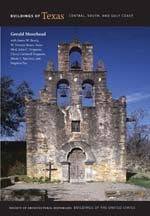
The house engages the building traditions of the borderlands, a theme the firm would also explore in its design of the new University of Texas–Pan American campus in Edinburg (see MR14). Set in a featureless suburban lot, the earthy, flat-roofed house is wrapped in eight-foot-high planar buff brick walls speckled with cream-colored brick that recall plaster remnants in Spanish colonial buildings of the region. A five-arched front loggia affords glimpses of the colonnaded interior courtyard. Standing in isolation from its context of 1950s and 1960s interpretations of colonial, Spanish, and English domestic architecture, the house, without views to the street, “was designed to create its own environment . . . expressed by a formal plan which turns in on itself,” as described in a January 1966 cover article in Texas Architect.

